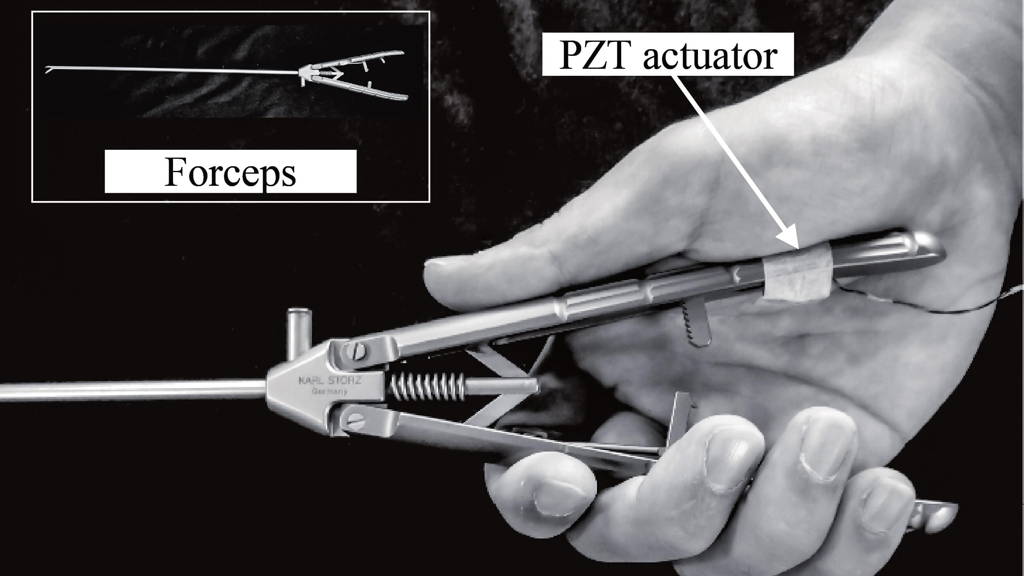Advanced haptic technologies are promising to bridge the sensory gap, but researchers at Hiroshima University in Japan have come up with a very cheap and easy solution to transfer the sense of touch from the tip to the handle in just about any already existing minimally invasive instrument, writes Hiroshima University.
Minimal invasive surgery is mostly used for operations where minimalo damage to soft tissue such as muscles and tendons. Problems such as lack of line of sight are being overcome more and more by using small cameras or computer navigation systems that provide surgeons with orientation points he cannot see normally.
As for sense of touch, the technique works by attaching a piezoelectric component to the instrument’s handle. The component vibrates gently at a constant frequency. This vibration is not felt by the person using the tool, but once the distal end of it comes in contact with tissue, the surgeon receives a distinct feeling in the handle. No modification of the actual surgical tool is necessary according to the scientists, except attaching the piezoelectric actuator. The technique works for most exsisting rigid instrument.
The technique already has been tested successfully using volunteers that had to feel for a Styrofoam ball inside a cup full of silicone, and identify different textures of sandpaper. These tests represent how a surgeon would potentially feel different tissues, perhaps even identifying which tissues are cancerous and which are not.
Minimal invasive surgery is mostly used for operations where minimalo damage to soft tissue such as muscles and tendons. Problems such as lack of line of sight are being overcome more and more by using small cameras or computer navigation systems that provide surgeons with orientation points he cannot see normally.
As for sense of touch, the technique works by attaching a piezoelectric component to the instrument’s handle. The component vibrates gently at a constant frequency. This vibration is not felt by the person using the tool, but once the distal end of it comes in contact with tissue, the surgeon receives a distinct feeling in the handle. No modification of the actual surgical tool is necessary according to the scientists, except attaching the piezoelectric actuator. The technique works for most exsisting rigid instrument.
The technique already has been tested successfully using volunteers that had to feel for a Styrofoam ball inside a cup full of silicone, and identify different textures of sandpaper. These tests represent how a surgeon would potentially feel different tissues, perhaps even identifying which tissues are cancerous and which are not.






